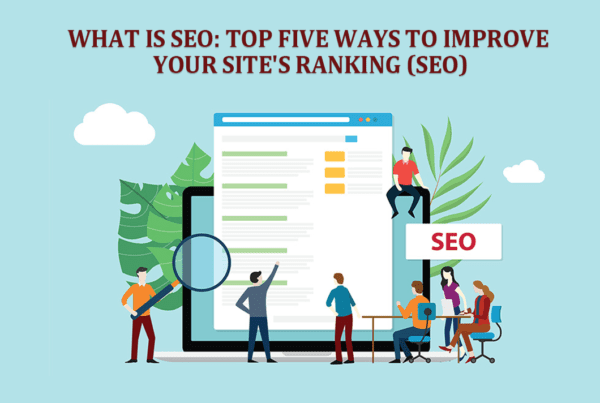SEO writing is just a term that describes the writing process for search engines. It consists of using good practices so that the text is better classified in the SERPs of search engines such as Google or Bing and, consequently, has more relevance and visibility for the public.
One of the most critical aspects of SEO writing is that a writing process based on technical requirements should not neglect the user’s reading experience. We must remember that the reader is the main objective of the strategy and cannot feel cheated.
A poor login experience can be evidenced by high keyword volume, compromising text intelligibility, pop-ups that open unexpectedly during login, or unsolicited downloads.
The graphic quality of the visual content is also a fundamental factor for SEO; in addition to the loading speed of the elements that make up the page layout.
1. Have a question and answer section on the home page of your website
For Google’s search engine algorithms and relevancy classifiers, the more information corresponding to the user’s search intentions, the better your page will be ranked.
You should consider that your audience has a tendency to write “queries ” (queries) in the search field individually, that is, each user will do the same search related to your products or services according to their own convictions. The broader your questions and answers, the better it will be for your page’s ranking.
This also means that if you create a question and answer section on the main page of your website, the available results will match the intentions of more people. Thus, you will have the opportunity to rank multiple times, with each question answered correctly.
2. Create an index on all your content
The objective of creating the index is the same as that of the question and answer section: to demonstrate that the content has the capacity to correspond to the search intentions and to respond appropriately to the requests of the users.
For this reason, it is important to transform the topics of the content into an index, relate them at the beginning of the article and, if possible, add the keywords in the titles.
You can take the Wikipedia index as an example. The questions are usually simple, but they cover strategic issues to clarify the most frequent doubts of the public.
3. Write subtitles in the form of questions
This tactic also corresponds to the objective that we present in the last two topics: to demonstrate to readers and classifiers that work for search engines, that the content of the page has the answers for users’ doubts. Automatically makes it a plausible choice for a good browsing experience.
How about using a question and answer tool to find common question options? Some solutions like Reddit, Answer the Public, and Quora scour the entire web for potential questions on various topics.
4. Choose your keywords properly
Keyword research is one of the most important stages of the SEO writing process since a wrong choice can inhibit a good positioning of your website in the SERPs, which means an opportunity cost of thousands of visitors.
There are tools that help determine the best keywords such as:
- Ubersuggest
- Moz Keyword Explorer
- Infinite Suggest
- Google Suggest
- Keywords Everywhere
- Infinite Suggest
Some allow you to verify search volume data, map the terms used by the competition, display long-tail keywords with the number of terms predetermined by the user, among other functions.
However, if you still prefer more practical, but less effective ways to map the most suitable keywords for your business, you can take advantage of the excellent resources of Google. That is, the search results themselves, be it the “autocomplete” section or the “people ask too” section.
5. Create extremely attractive titles
Before clicking on the title, the user is just a prospect. Once you show interest in the website, from your first click, it becomes a lead. If the experience of your visit is positive, the lead can become a potential customer, to finally become a consumer of the brand.
According to a study published on the Moz blog, the organic click rate increases Google’s rankings. The best way to increase the CTR (Click through Rate) is to create attractive titles for your articles.
It is useless to have a good position in the SERPs if the title does not arouse curiosity, a sense of urgency, or does not show that the text has the ability to meet the demands of users.
Add the main keyword in the title tag.
Make lists and add the numerical number of tips in the title. For example, “Discover 10 ideas to become an SEO writer.”
6. Rank your text
The structure of the text is also an important issue for SEO writing. Title tags are a kind of skeleton of the content and keep it structurally organized, thus providing an outline of what the reader will be able to expect from the reading.
In the eyes of search engines, this structuring is much more important and favors correct indexing of the page. To do this, he considers that it is essential to keep the most relevant titles in descending order:
- The title of the page H1
- Subtitles and main topics of the article in H2
- Subtopics that fit into the second section in H3
And so on.
However, although text editors allow editing of up to H7, if you use more than H4 the content will be too hierarchical, without providing effective advantages for SEO.
7. Use keywords naturally
We already mentioned the importance of keyword choice, but we haven’t yet specified how they can be used strategically in content. Google’s analytics teams have been known to not consider keyword density as a relevant factor for ranking.
This is because using them exaggeratedly and unnaturally can harm users’ reading experience. In this way, the location of this element can be more relevant than the amount used in the content itself. So never forget to add the keyword:
- in url
- in the title tag
- in the meta tag or meta tag
- in the first paragraph
- in an H1 tag
- in an H2 tag
8. Create short paragraphs
Voice clarity is another key element for a good user experience. A more fluid reading favors the permanence of the reader on the page and is even conducive to clicking on other articles.
This also shows that the content is capable of delivering a faster solution to the reader’s search.
To promote the intelligibility of the information, write each sentence of your article as if it were a 140-character tweet.
With this in mind, it becomes easier to keep your thinking concise. Also, use bold to highlight statistical data and relevant information, and use lists in parts of the content with the numbered list facility or the bullet function.
9. Use Meta tags
We already talked about title tags, which are a type of Meta tag that helps search engines index the page.
There is an infinity of Meta tags that can be used with this objective, however, some are already in disuse as Google itself commented.
Metadata acts as “clues” for search engines: it helps tell the story of the content and guides how it should be presented in the SERPs.
Optimizing title tags, Meta descriptions, and image alt text, for example, can take just 75 words in total and are effectively more important than the rest of the copy on the page.
Title tags
- Use only one title tag per page and try to include a primary keyword.
- Create title tags with a maximum of 70 characters.
- Use a unique title tag on each page. Never duplicate them.
Meta description
- Create Meta descriptions with approximately 160 characters.
- Develop phrases that attract attention and arouse the need for clicks.
- Use the primary keyword and if possible, the secondary ones as well.
Alt text
- Use descriptive language that matches the image.
- Include your keywords.
- Limit yourself to using up to 125 characters with the tags separated by commas.
10. Create a backlink strategy
The backlinks are also strategic elements in SEO writing and many websites, as Moz, already proved this in their studies.
The goal of search engines like Google is to provide the best possible experience for users, and this includes offering pages with authority and truthful information.
An indicator that the website has this ability is the backlinks. They point out that the information available on the page is really reliable since more than one website certified it from the link of the data.
Also, when you add external links to authority websites, you contribute to the effectiveness of this strategy. As a consequence, your content becomes more SEO-friendly.
Therefore, it is important to include a large volume of statistical data in the content, either to support arguments or for other sites to link to your page. Internal links are another great way to optimize content, for both users and search engines.
11. Create a sitemap
I sitemaps are strategic platforms with a large volume of pages because they allow organizing information for search engines, either of websites recently launched, we still do not have backlinks enough to show him the authority to the search engine, or for companies, They aim to position themselves in specific categories.
Generally, they are XML files (they can also be RSS, mRSS, Atom 1.0 to TXT) and contain metadata to guide search engines in the process of indexing the pages. This is why sitemaps are important for SEO writing.
Most of them are created from tools such as plugins, for WordPress users, and they have that important because they allow algorithms to locate and classify:
- URLs
- The date and frequency of updates
- The relevance of the content
- The length of the videos
- The authorship of the images
12. Update the content
The content update is much more based on making substantial changes than on the inclusion of an image or the alteration of a part of the text, and this is a process that can guarantee better rankings in search engines.
In addition to making the content more attractive to the public by updating the information based on context, this process reiterates the importance of the page to search engines. The more content that is modified, the better the impact of the update.
13. Reindex the page
The reindexing of pages was not allowed until December 2020. However, Google reactivated this resource to speed up the process of analyzing its algorithms.
This action signals to the search engine that relevant changes were made to the content and that these changes should be considered in the classification of the page. According to the Moz site, this stage is essential to conquering the long-dreamed snippet more quickly.
14. Measure your results
The evaluation of the results is also important for SEO writing because it allows to analyze the gains and promote changes to enhance them. The foundation for any SEO strategy is knowing what you hope to achieve.
Set measurable goals before you begin, so everyone involved in the process – planners, writers, reviewers, and marketing analysts – work toward the same KPIs.
The most relevant metrics for the SEO writing process are:
- Page click rate
- Conversion rate
- Organic traffic
- Backlinks
- Position in the SERPs
- Snippet scope
- User time spent on the page
- Page authority level
- Difficulty reaching a keyword organically
- View rate per session
In SEO writing, you should consider the goals set for your strategy and the search engine relevancy determinations. However, writing content is much more of a process to meet user demand than SEO requirements.









